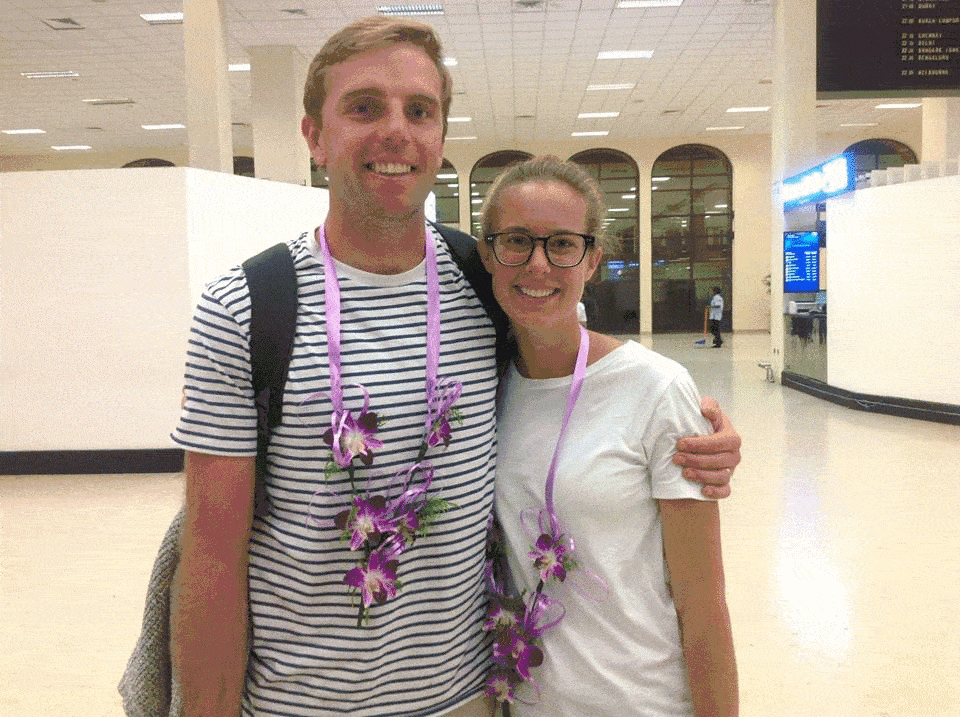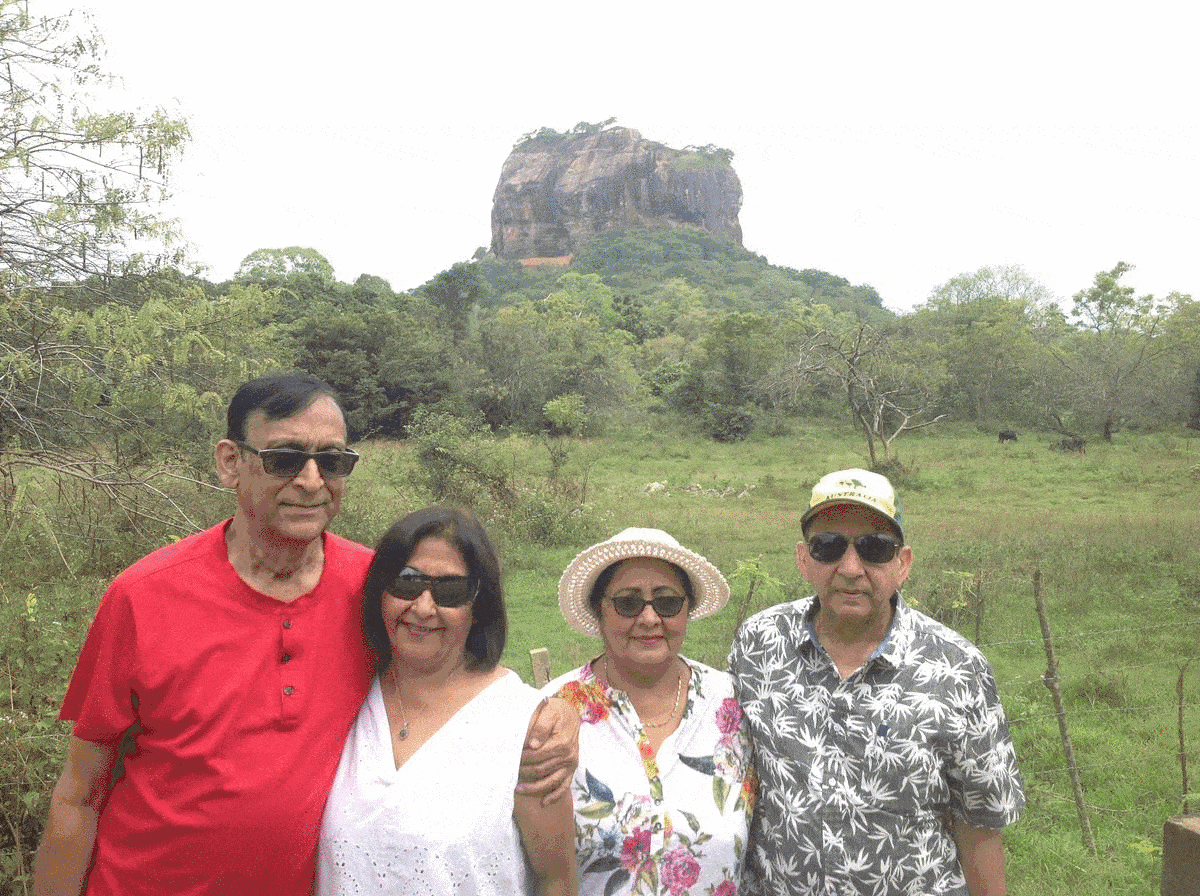SIGIRIYA
Little can prepare you for the experience of Sigiriya, arguably the most remarkable of all of ancient Lanka’s former capitals and Sri Lanka’s very own 8th Wonder of the World
Rising 200 meters from the flat plains of the north central region of Sri Lanka, the physical presence of Sigiriya is matched only by the enormity of the engineering undertaken by its creator. The summit of this almost inaccessible rock was the unlikely setting for a courtly paradise of elegant pavilions set amid gardens and pools. But even before the rock was transformed into this palatial impossibility, Sigiriya was home to a monastic settlement constructed on its western and northern slopes. It was some 600 years later that the palace, of which only the remains can he seen today, was constructed. The rock was transformed into an immense recumbent lion by the addition of a brick-built head and foreparts, of which only the artfully sculptured paws remain. The impact of the Lion Rock, as it is called, must have been awesome, since even its remnants beggar belief and even then attracted visitors from all over the island. Executed daringly, on a stupendous scale, it prompts one to marvel at the creative vision that was behind its construction.
KASSAPA’S PALACE IN THE SKY
The creator of Sigiriya was perhaps the most interesting monarch Sri Lankahas produced; the brave, murderous and brilliant Kassapa, who reigned between AD 477-95. He wanted to create on earth thepalace ofKubera, the God of Wealth.
As chronicled in the Mahavamsa, the son of King Dhatusena, Kassapa, was born to a non-royal consort. Knowing that his half-brother Moggallana, younger but of royal blood, would succeed him, he seized the throne, imprisoned his father and later killed him for not disclosing the whereabouts of his treasures. Moggallana fled to India intending to return with an army. Seven years after his ascent to the throne, Kassapa moved into his amazing palace at Sigiriya (which took only 7 years to build, and with even the latest of our modern day technologies would be a mammoth task), built for defense in preparation for his brother’s revenge attack.
The rock’s natural defenses were augmented by some ingenious strategies. Broad moats and stone perimeter walls were constructed on a scale not found elsewhere in Sri Lanka. In the event of an enemy approach, the outer moat was built so as to flood the entire area between the two moats. A boulder-catapult still stands on the summit waiting to be unleashed upon an intruder. To encourage the guards to stay awake, the sentry points on the rock summit were strategically placed so that a momentary lapse of attention would send the drowsy guard plunging to his death.
The revenge attack from his half brother did eventually happen in 495, 18 years after Kassapa seized power. Despite having created the best defended fortress in the country, the arrogant Kassapa descended to the plains to confront Moggallana and his army. At the height of the battle, by a stroke of misfortune, Kassapa’s terrified elephant turned and retreated backwards, followed by his troops. Courageous as he was, once Kassapa realized his situation he drew his sword, drove it down his throat killing himself, leaving no room for capture by his enemies. Sigiriya was not just the fortress of a paranoid tyrant; it was the palace of a ruler who wanted to assert his right to kingship with symbols, and to show through great works that he was the rightful monarch. He may have only had a short reign, but his achievements have lasted over 15 centuries.
Legend has it that Kassapa’s dying wish was to not have any leader rule from him dream palace, and hence his faithful servants destroyed the palace to its foundation as their final order.
THE WATER GARDEN OF SIGIRIYA
The Water Garden, still well preserved, is a combination of the hanging gardens of Babylon, the boulder gardens of China or Japan and the water gardens of ancient Rome. TheTerraceGarden flows down to theBoulderGarden and then to the geometrically laid outWaterGarden in the western precinct. With running water and fountains, pools and ponds, aquatic flowers, birds of gorgeous plumage and tropical trees in bright blossom, these royal gardens must have been a place of serenity for mind and body.
The entire Water Garden is in a walled enclosure below the rock. Elaborate gatehouses made out of timber and brick masonry are marked by the cavities left by the massive timber doorposts, but nothing more survives. Almost adjacent to the western entrance is a miniaturized water garden of splendid beauty discovered not long ago. With winding waterways, shallow reflecting pools, corbelled water courses and marbled floors, and an intricate layout of tiled roof buildings, this garden covers an area almost half the size of a football field – an ideal location to get a glimpse of the splendor of Sigiriya.
Adjacent is a central island, surrounded by four L-shaped water pools, originally almost entirely occupied by a large hall or a pavilion. These ponds appear to have been used as bathing pools, with polished walls, flights of steps and surrounding terraces, similar to a modern-day swimming pool. Reinforcing the symmetrical layout, towards the Lion Rock are four large mowed islands located on either side of the walkway. Cool water palaces once occupied the two inner stands. Abutting these islands are fountains fed by waters from the artificialSigiriyaLakeunder gravitational pressure. Using symmetrically perforated limestone plates to fashion their spouts, these fountains operate in rainy weather even today. Another remarkable pool, octagonal in shape, is hidden from the main western walkway, and adds further to visitors’ amazement. Surrounded by a wide terrace following its shape, the pool is sheltered by a gigantic boulder almost the height of a six-storey building, a bold arrangement of water harmonizing rock, with the pond located at the very point of transition front the water gardens to the boulder gardens.
The creation of the entire landscape is impressive, in which the city has been built to harvest every drop of rain water before continuing into the surrounding moats.
SIGIRIYA BOULDER GARDEN
The Boulder Garden in the Sigiriya city complex is in sharp contrast to the geometrical symmetry of the bordering Water Garden, yet the fusion of the two gardens is remarkable and clearly ahead of its time. Striking boulders of varying sizes grace this area. Linked together by winding pathways and paved passages, with boulder arches and limestone stairways, edifices which are now lost stood on almost every boulder, and there were rock caves beneath them. The intriguing honeycombed holes on these boulders are nothing but footings for the brick and timber buildings. Equally fascinating are the rock carvings on these boulders, especially those on an enormous split boulder. On the fallen half, known as the Audience Hall Rock, is a 5-metre (16-ft) long carved throne facing a leveled square; and on the standing half is a water reservoir, dug into the rock, hence its name, the Cistern Rock. Another boulder of interest is the picturesque Cobra Hood Cave, so named because of its shape. Buddhist monks from as early as the 3rd-century BC used this cave, though its painted ceiling is dated to the period of Kassapa (5th-century AD). The Preaching Rock, located on the side of die octagonal pond, is also impressive. Its tiered platforms are believed to have been used by orating monks. Clearly, theBoulderGarden, with its many caves, had been used as a monastery long before Kassapa incorporated it into his royal pleasure garden.
An undated Buddhist monastery complex including a dagoba, a bodhigara (bo tree temple) and an image house is located in the boulder garden area. Of particular interest is the basin at the entrance to the bodhigara, intended for the cleansing of feet before entering the monastery. Large trees adorn the site, especially Halmilla (Berrya cordifolia), a precious timber, characterised by its heart-shaped leaves and six-winged propeller-like fruit. With terraced and turfed areas, the gardens are ideal for a short rest, either on the way to the summit or when returning, because of its central location and tranquil atmosphere.
THE TERRACE GARDEN IN SIGIRIYA
Merging with the BoulderGardenis the Terrace Garden, similar to the hanging gardens of Babylon. Rubbled retaining walls keep back the mounting earth Impressive brick-built staircases with limestone steps traverse the terraces, pro viding access to the uppermost level and onwards to the Sigiriya Rock itself. The once magnificent Sigiriya Wewa tank could also he reached from here. This lake is the main source of water for the water gardens, but as it appears today, it is only a fraction of its original size. Ancient visitors to Sigiriya had not only appreciated the frescoes but also the lake itself, as evidenced by inscriptions describing the lake as having clear water and colorful water lilies.
An evening walk on the trail around its bund (embankment) is a pleasant way to while away some time. It is difficult to imagine the maze of pipe work buried under your feet as you stroll along. This intricate network covering the entire Sigiriya complex, with control valves, electrical circuits, manholes, silt traps, by-pass conduits and the like, is comparable to modern networks. Stone drains encased in clay carried water horizontally, and downpipes, made of two stone semicircular sections held together by metal straps, carried water vertically. You will also see many open channels cut into the rock itself, used for collecting water drained from the summit. Excess water overflowed to irrigate the lower areas of Sigiriya. Conservation was paramount in the minds of the Sigiriya designers. The gardens are indeed a unique achievement, not only because of their complex hydraulics, but also because they are so well preserved, their antiquity preceded only by such ancient gardens of the Romans as those at Pompeii and Herculaneum, and the imperial gardens of Hadrian at Tivoli. The Water Garden, the BoulderGarden and theTerraceGarden make a harmonious picture on a grand scale.
SIGIRIYA LION’S MOUNTH
Sigiriya Rock rises up out of the plain, and is visible from many miles away. It takes about two hours to climb up and down and the effort is repaid by the view from the summit over jungle, paddy fields, ponds and distant mountain ranges. It has a half-way stage at its northern end, where a large plateau offers rest and stalls sell refreshments. The drink-seller who has climbed up the rock with his stock of bottle and cans has earned his rupees, and you have earned a drink; but this is only the beginning. The two enormous lion’s paws are all that remain of the giant beast that gave the rock its name, for, incredible though it may seem, the entire rock was transformed into a mountainous lion by the addition of brick-built foreparts, stuccoed and presumably painted. There were originally steps leading up between the paws and into the lion’s mouth. What an entrance! The sheer audacity of the idea is breathtaking, and the surviving paws themselves are of a scale to make you shudder. They are expressively molded, intimidating in themselves.
MIRROR WALLED CORRIDOR
Above the lion’s Platform and beneath the fresco pockets is the highly polished Mirror Wall. Coated with polished lime, this wall still reflects like glass. 1,500 years after it was built. Scribbled on its surface are nearly 1500 pieces of prose and poetry composed by the ancient visitors who flocked to Sigiriya from all over the island. These poems, which testify to the sightseers’ appreciation of art and beauty, were written between the 7th and 13th centuries and are said to beSri Lanka’s oldest graffiti. Most of the pieces are written in Sinhalese, but some of the poems are written in Sanskrit and Tamil. Apart from the very obvious beauty of the fresco pockets, the scribblers must have been inspired by the sight of the regal lion, the majestic castle, the exquisite ponds of the water gardens, the lovely Sigiriya lake, and also by the other visitors.
A vivid picture of Sigiriya and its grandeur during Kassapa’s reign and thereafter is reflected in this graffiti. Sigiriya was not only a place of worship but also a haven of pleasure for many who visited after his death. It was a lovers’ rendezvous and a place of merriment for the early sightseers who thronged to Sigiriya. Indeed, this graffiti is a repository of evidence for the study of history, culture and language.
SIGIRIYA FRESCOES
Fascinating among the pictorial art of Sigiriya are the glamorously sensuous paintings of feminine beauty. This was a daring endeavor by Kassapa, since Sri Lankan art was inspired by Buddhism, a religion that preaches the cessation of lust to achieve everlasting happiness. These figures of women, some of golden color and others dark, pictured in isolation or in pairs, are depicted as rising from clouds and are known as “the cloud damsels”. Somewhat less than life-size, they are depicted in three-quarter profile.
One has to examine the paintings in detail to enjoy their loveliness; striking diversity in mood and personality, face and body, clothes and make-up can he seen. Flowers are used in profusion in their hair, in baskets, and in various forms. While these flowers enhance their sensual charm, one wonders whether the painters of Sigiriya added these deliberately to compare the beauty of a woman’s face, the softness of her skin and the beauty of her body, with that of a naturally fresh flower.
Originally there were some 500-odd paintings drawn across the precipitous face of the Sigiriya rock, forming a gigantic gallery of paintings which covered an area almost twice as large as a football field. Extending as a wide band from the western face of the rock to its northeast corner, these paintings may perhaps be the largest mural ever attempted. Painted mainly on the open face of the rock, with drip-ledges for protection, fewer than two dozen survive today. These remarkable remains, in an extremely good state of preservation, are located in a rock pocket above the Lion’s Plateau, reached today by a winding staircase. The remnants of the layered plaster coats on which these paintings were drawn in tempera are still visible, some on the open western face of the rock. These frescoes were of such quality that visitors from all corners of the world made the journey to Sigiriya.
Recent archaeological explorations have unearthed miniature terracotta figurines of these beautiful women. About 10-20 cm (4-8 in) long, they seem to have been produced as souvenirs for those who visited Sigiriya. The Sigiriya women have long waists, narrow hips and thin faces – with expressions suggesting a seriousness of purpose. What were the real reasons for these paintings at Sigiriya? There are many. While some have portrayed them as women of Kassapa’s court in a devotional procession to the nearby shrine at Pidurangala. others have suggested that they are apsaras (celestial nymphs) in keeping with South Indian traditions.
Another suggestion is that they represent clouds and lightning moving about thepeak ofMount Kailasa. Surprisingly, these are not the only paintings at Sigiriya. Though less well-preserved, later works were found in caves in theBoulderGarden. These paintings differ from those found on the upper rock surface. For example, the paintings on the high ceiling of the Cobra Hood cave combine geometrical shapes and motifs into a harmonious whole.
THE PALACE ON THE SUMMIT
Would you climb a multistory building without the aid of a lift? Reaching the summit of Sigiriya is a similar feat. Emerging from the jaws of a regal lion, now destroyed by the torrential downpours and gusty winds it has suffered over 15 centuries, visitors set foot on territory once reserved exclusively for royal use. A unique palace, with layout and ground plan clearly visible, it is strikingly different to those found in Anuradharapura and Polonnaruwa. While the inner palace occupies the high western sections, the outer palace occupies the lower eastern sections, and the palace gardens cover the south, they all converge on a large and lovely rock-cut-pool, probably used for water storage. With thousands of marbled steps and walkways, this 1.2 hectare (3-acre) site is stupendous and the views are breathtaking.
Rediscovered in the first decade of the 19th century, planned antiquarian research began only during the early years of the 20th century. Recent excavations and restoration work under the Cultural Triangle Project sponsored by UNESCO have aroused much interest. The Archaeological Museum (open Wed-Mon, 8am-5pm), just west of the Water Garden outside the main complex, bears some of the fruits of this labor.







